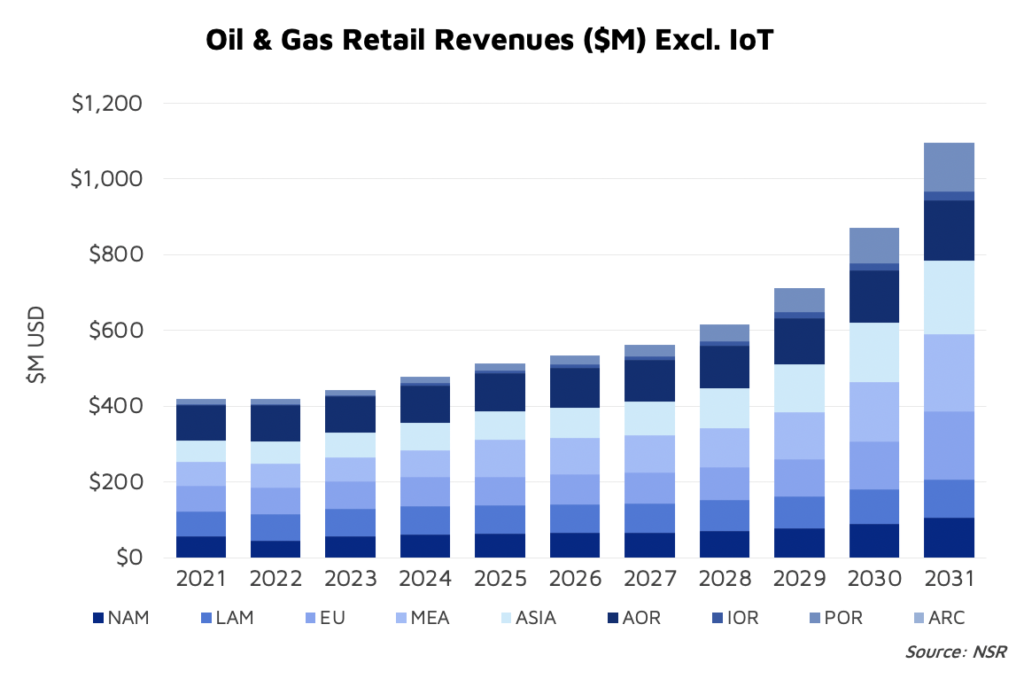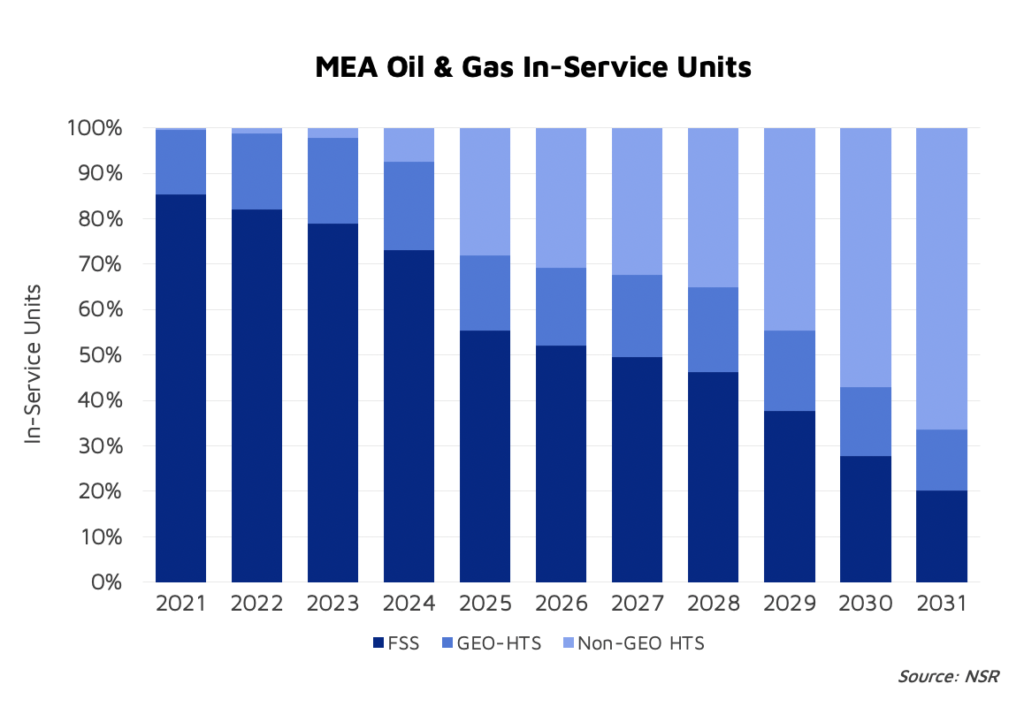Is Non-GEO Primed for Growth in Middle East Energy Markets?
Oil and Gas players are looking to optimize and increase productivity across their operations – which is largely built on data capture, processing, and action. In the Middle East and Africa, digitalization within the energy industry is rapidly transforming the sector. This digitalization is creating focused on moving data from remote locations, congesting existing GEO-centric satellite networks. Non-GEO based services from the likes of Starlink, OneWeb and others will build on enabling rapid connectivity and efficient data transfer in remote and hard-to-reach locations in the nearest future.

NSR forecasts in its latest Energy SATCOM Markets report (9th Edition) that by 2031, the Middle East and Africa (MEA) will generate the highest cumulative retail revenues at $1.1 billion USD (US Dollars). The oil and gas industry in the region is constantly expanding, with more remote sites being developed to extract resources. Non-GEO technology is purported to offer a cost-effective and efficient solution to this problem by providing reliable and high-speed data connectivity to remote sites without significant CAPEX (capital expenditures) spend. Fixed satellite services (FSS) connectivity has been an important communication solution for oil and gas companies, providing reliable and high-speed communication links in remote locations where terrestrial connectivity may not be available or reliable. However, as more Non-GEO players enter the market and more connectivity options become available, oil and gas companies are exploring alternatives to meet their communication needs.
Steady Migration Towards Non-GEO

In the mid-term, FSS/GEO connectivity will keep a strong hold on the market due to their established reliability, widespread availability, and low end-user requirements. However, the Oil and Gas industry has a clear requirement for low latency connectivity. NSR predicts the oil and gas industry in the Middle East will experience a rapid migration to Non-GEO services, from almost non-existent at the beginning of the forecast period to obtaining a significant slice of the pie by 2025. NGSO connectivity can provide improved coverage in remote and harsh environments, reduce latency for real-time monitoring and control, provide greater bandwidth for data-intensive applications, and improve security through encryption and anti-jamming capabilities. Oil and gas companies are moving to adopt/integrate more non-GEO connectivity into their remote network designs, causing demand for FSS connectivity to plummet. Non-GEO is also becoming more affordable and accessible, with more satellite operators entering the market and offering competitive pricing.
A Note for Non-GEO Operators and Service Providers
To help increase their success, Non-GEO operators should:
Build a Swiss Army Knife solution: Companies require a solution that is comprehensive and adaptable, such that it meets the diverse needs of the industry, including high throughput capacity, low latency connectivity, flexibility, resilience, security, and cost-effectiveness.
Provide reliable and secure connectivity: Operators should provide reliable and resilient systems because companies cannot afford to have downtime or service interruptions. Starlink service outages in some regions show that Non-GEO technology has some way to go to be fully resilient with an iron clad SLA. This limitation will impact Non-GEO from being a primary link in the near to mid term, but as more constellation shells are filled and ground/antenna technology matures, reliability will certainly increase.
Focus on innovation: Operators should focus on integrating low-latency connectivity alongside operations, developing new satellite constellations, enhancing ground networks, or exploring new applications of satellite communications technology within the industry.
The Bottom Line
Oil and gas companies in the Middle East adopting Non-GEO technology present significant opportunities to revolutionize the industry by providing high-speed data transmission, low latency, and extended coverage. While there are challenges to be addressed, the benefits of Non-GEO technology outweigh the challenges, making it an attractive long term solution for oil and gas companies in the region and globally.
